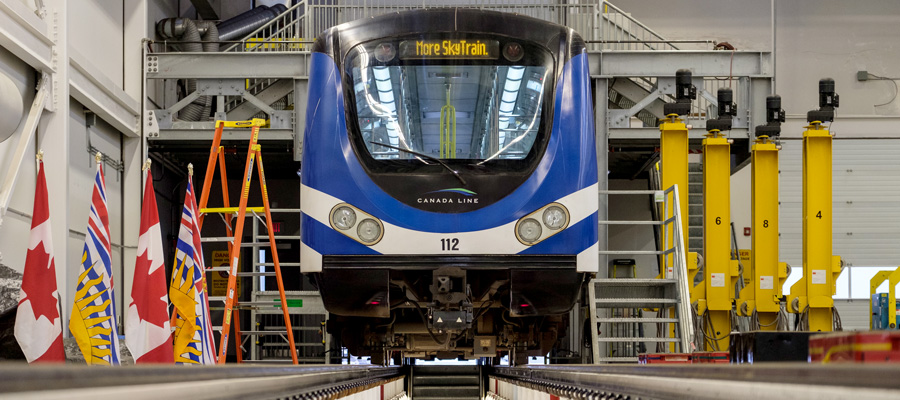Accelerate investment in public transit

Expanding public transit is a win-win for the province: it reduces costs for households, improves mobility, creates good jobs and supports long-term economic prosperity, while helping reduce GHG emissions and air pollution.
BC’s current automobile-dominated transportation system also imposes costs in other ways: injury and death from accidents, time wasted due to idling on congested roads and highways, and noise pollution.
There is an urgent need for stable, long-term capital funding for public transit in Metro Vancouver and for related infrastructure deficits facing BC municipalities. After lengthy delays, the final approval of Phase 2 of the Mayors’ Plan—which includes the Broadway subway to Arbutus and two lines of light rail in Surrey, along with other upgrades and service enhancements—is good news for the region.
There is an urgent need for stable, long-term capital funding for public transit in Metro Vancouver and for related infrastructure deficits facing BC municipalities.
With dedicated funding for transit expansion, the Broadway subway could keep shovels in the ground and get to a final destination of UBC, while the Skytrain could be extended from Surrey to Langley. Just as the BC government decided to fully fund the $1.4 billion capital cost of replacing the Pattullo Bridge, so should the BC government commit 100% of the capital costs of new transit infrastructure (as it did for the Millennium line, for example).
Other high-capacity transit networks could be built in Metro Vancouver, and be extended out to the Fraser Valley and up to Whistler. This need not all be rail: there are many good opportunities for new marine transit options within Metro Vancouver, in particular the Burrard Inlet, and between Vancouver, Squamish and the Sunshine Coast.
The BC government has also enabled Metro Vancouver’s TransLink with new self-financing options, including a 1.5 cent per litre increase in the regional fuel tax and a new development cost charge. This has prompted some outrage by anti-tax groups in the face of record high gas prices at the pump. However, as our analysis reveals, the vast bulk of high gas prices is due to market forces and gas gouging, which merit price regulation at the provincial level.
BC’s infamous Highway of Tears shows that a build-out of public transit capacity across the province cannot be put off any longer. This is a central transportation justice issue.
Fuel tax revenues are also projected to decline in the future as low- and zero-emission vehicles become more common. TransLink’s Mobility Pricing Independent Commission points to alternative means of funding the transportation network and managing congestion through new pricing mechanism. These merit consideration by the BC government, although equity issues need to be front and centre.
Public transit is not just an urban issue. The decision by Greyhound to pull service from Western Canada means low-income households across BC will be faced with diminished mobility. More coherent regional and long-haul transit services should be supported through BC Transit. BC’s infamous Highway of Tears shows that a build-out of public transit capacity across the province cannot be put off any longer. This is a central transportation justice issue.
Topics: Environment, resources & sustainability, Municipalities, Provincial budget & finance

